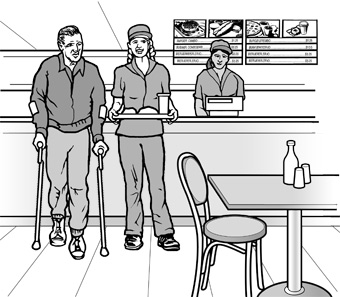



banner.jpg)


The Americans with Disabilities Act
A brief introduction
The goal of the ADA is to make it possible for people with disabilities to participate in the everyday commercial, economic, and social activities of American life.
The law covers employment; state and local government programs, services, activities, and facilities; and businesses and nonprofit service providers. This course focuses on the requirements that apply to businesses.
The ADA says people with disabilities are entitled to “the full and equal enjoyment of the goods, services, facilities, privileges, advantages, or accommodations” that a public accommodation provides to its customers. In other words, every type of good or service a business provides to customers is covered by the ADA. All businesses that serve the public must provide equal opportunity for customers with disabilities.
The ADA asks public accommodations to take steps that are “readily achievable” or are “reasonable”or that do not constitute an “undue burden” to enable people with disabilities to be their customers and clients. These terms are explained later in the course. After taking the course, businesses that are willing to do simple, easy, and reasonable things to accommodate customers with disabilities will likely find it easy to comply with the ADA.
In a casual restaurant, an employee assists a
man using crutches, by carrying his tray to a table.
|
|
|
|
|
|





